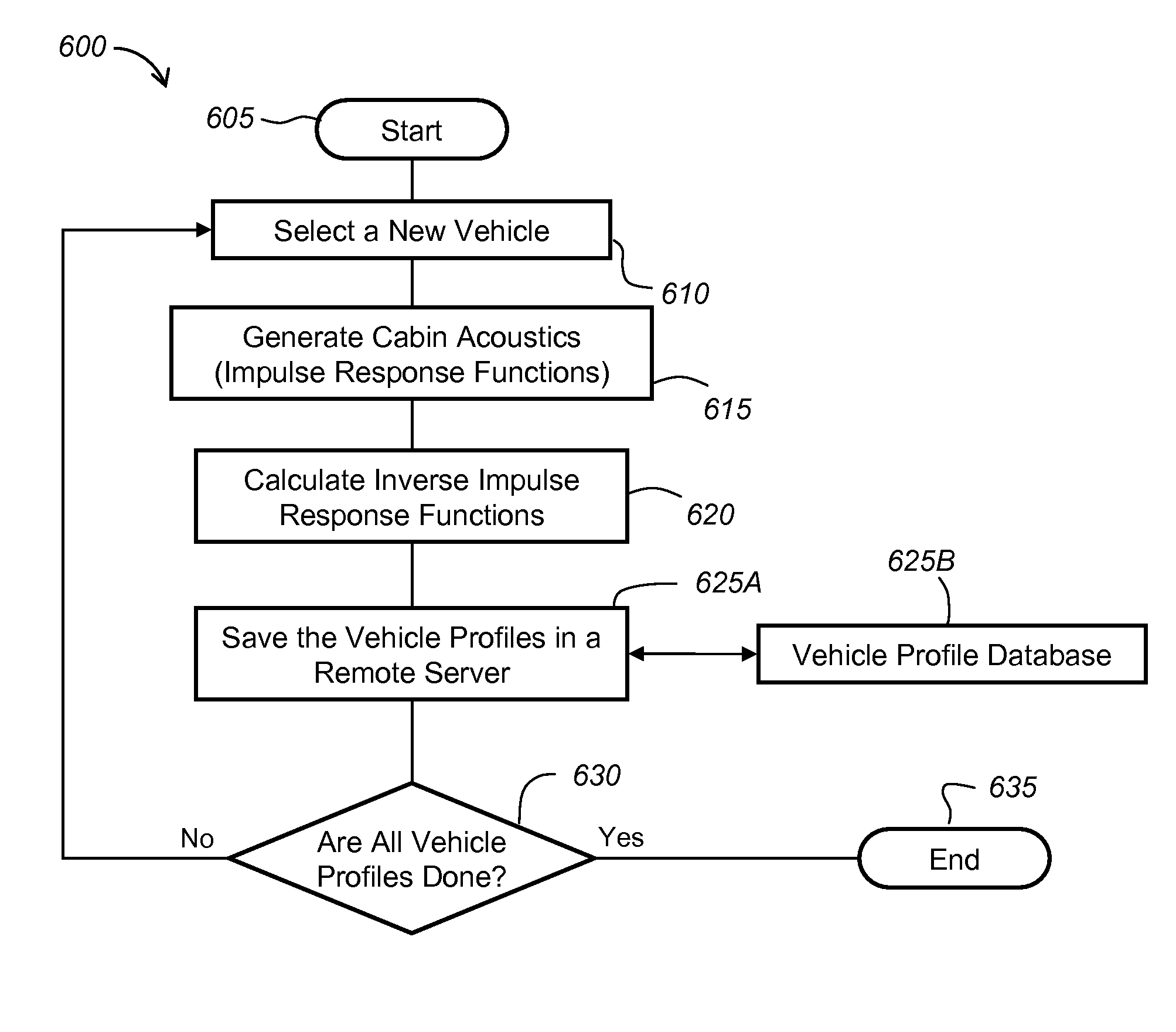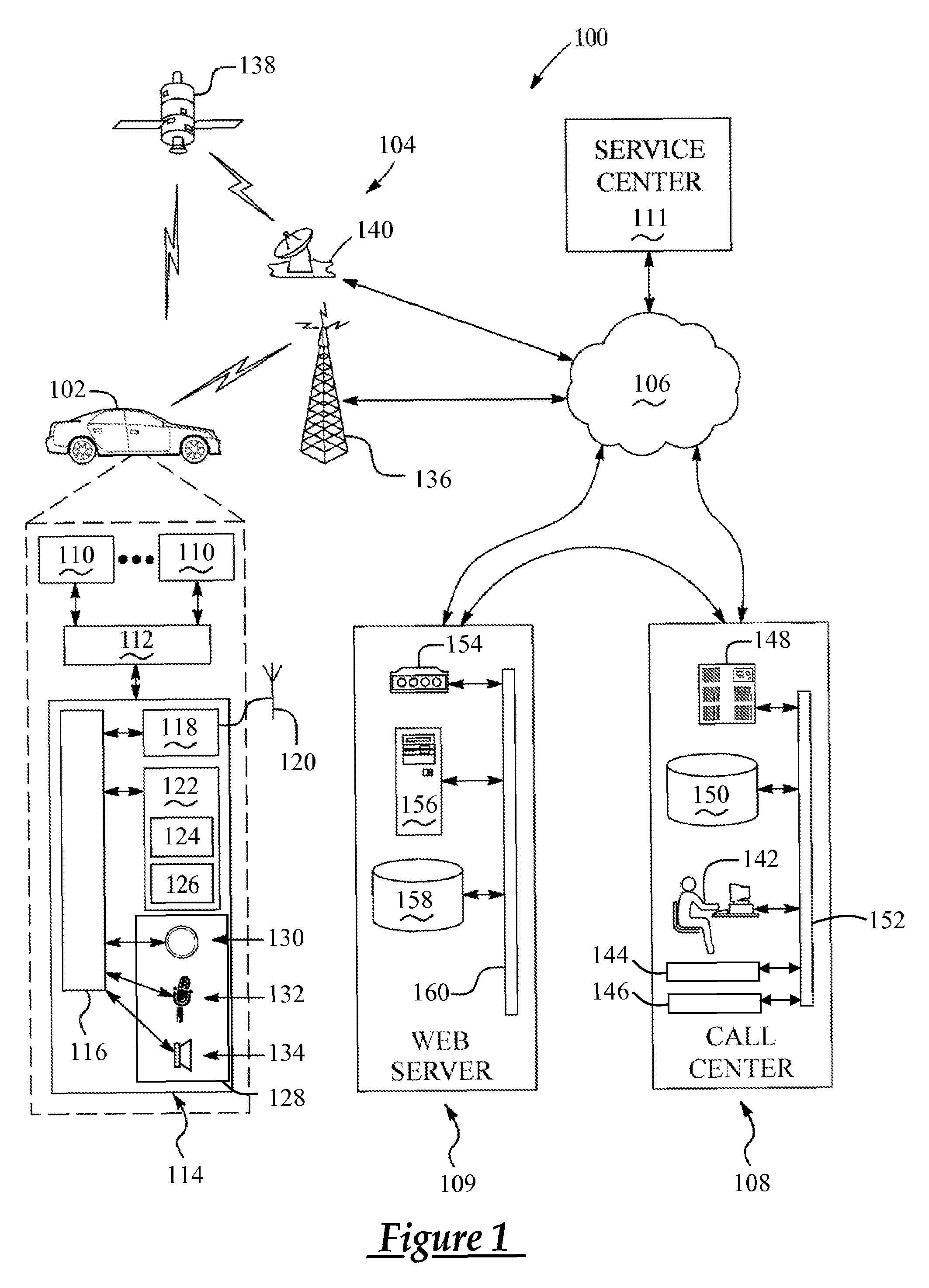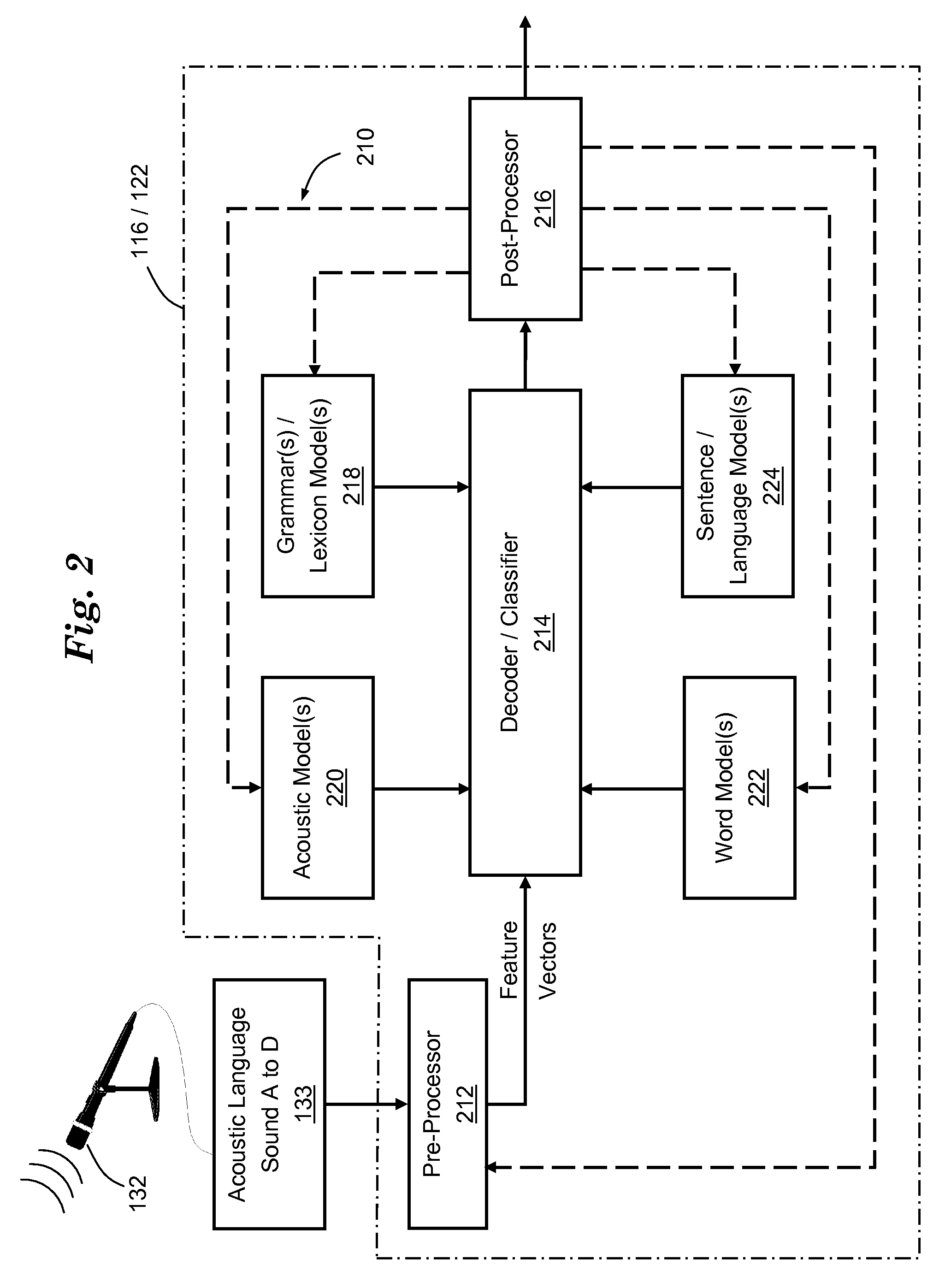Automated speech recognition using normalized in-vehicle speech
a technology of automatic speech recognition and in-vehicle speech, applied in the field of speech signal processing, can solve the problems of increasing computing memory and power requirements, preventing the asr system from quickly and accurately developing models, and reducing the accuracy of speech recognition
- Summary
- Abstract
- Description
- Claims
- Application Information
AI Technical Summary
Benefits of technology
Problems solved by technology
Method used
Image
Examples
Embodiment Construction
[0021]An exemplary operating environment enabled with automated speech recognition (ASR) is illustrated in FIGS. 1 and 2, and can be used to implement the illustrated embodiments speech recognition methods. These methods can be particularly useful for voice dialing applications, voice activated web browsing applications, or the like. The methods can include speech recognition generally and improved applications of speech recognition, and are discussed in detail further below in conjunction with FIGS. 3 through 7.
[0022]The methods can be carried out using any suitable ASR-enabled system. Preferably, however, the methods are carried out in conjunction with an ASR-enabled telematics system such as the illustrated system 100, which can include a motor vehicle 102 carrying one or more occupants or users, a wireless communication system 104 for wirelessly communicating with the vehicle 102 and a second communications system 106 that, in turn, communicates with a call center 108 that provi...
PUM
 Login to View More
Login to View More Abstract
Description
Claims
Application Information
 Login to View More
Login to View More - R&D
- Intellectual Property
- Life Sciences
- Materials
- Tech Scout
- Unparalleled Data Quality
- Higher Quality Content
- 60% Fewer Hallucinations
Browse by: Latest US Patents, China's latest patents, Technical Efficacy Thesaurus, Application Domain, Technology Topic, Popular Technical Reports.
© 2025 PatSnap. All rights reserved.Legal|Privacy policy|Modern Slavery Act Transparency Statement|Sitemap|About US| Contact US: help@patsnap.com



